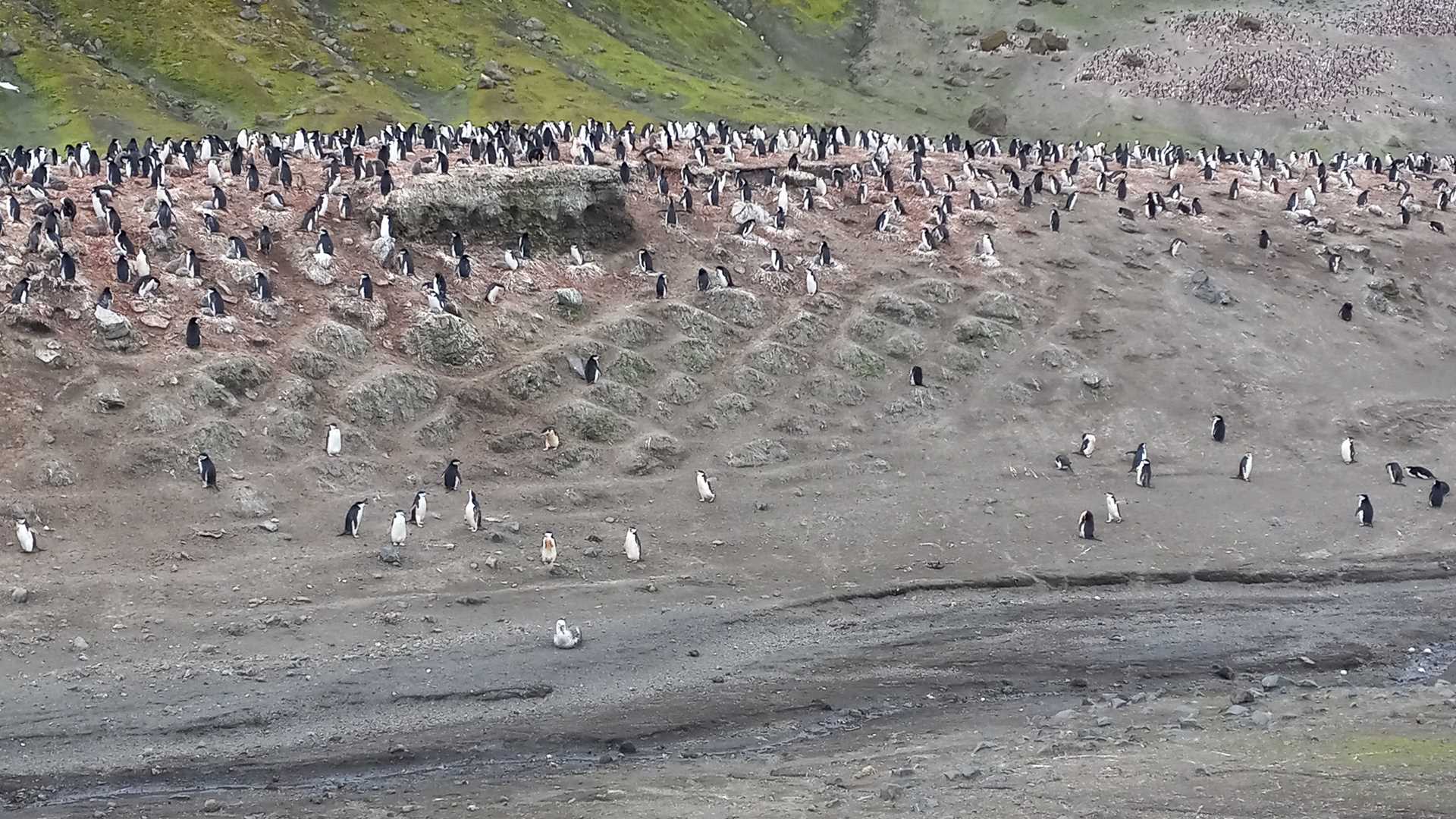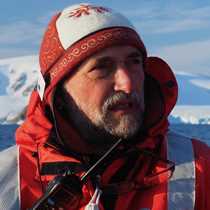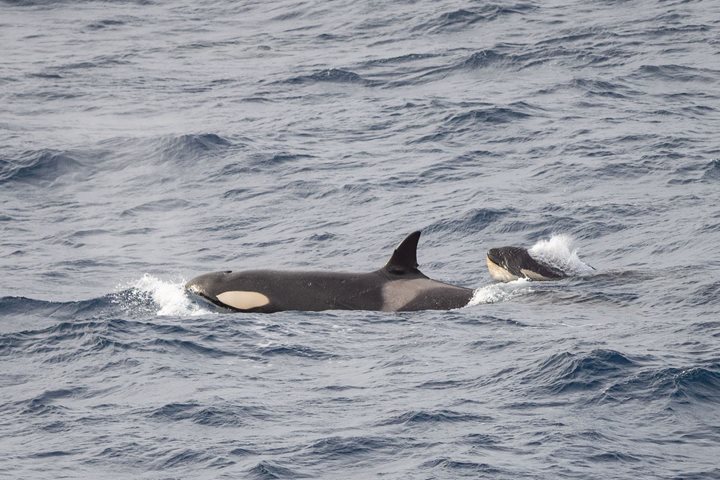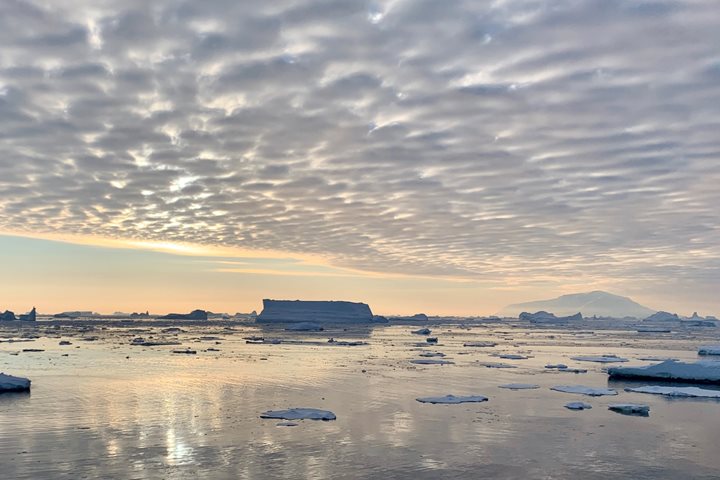This day was like a cherry on the top of a cake for the entire expedition. In the morning, our ship approached Deception Island, which has one of two active volcanoes in Antarctica. In fact, the entire island represents leftovers of a gigantic volcano that violently erupted about 10,000 years ago creating an underwater caldera (a blast hole) in the central part of the volcano. So, the island represents a rim of land around the caldera bay and resembles a horseshoe in outline.
We had to land outside of the caldera bay on the tops of large swale waves. Thousands and thousands of busy chinstrap penguins greeted us both during our approach to the landing and on land, where dramatic wind-carved sculptures sat on an impressive cliff made of countless volcanic ash layers. We hiked for about 1.5 kilometers maneuvering among nesting sites of penguins. Around 50,000 chinstrap penguins nest in this area.
Many curious penguins came directly to our feet and had their portraits recorded on numerous cameras. Chicks were still very young and had gray baby plumage. From time to time, we saw brown skuas and giant petrels among penguin colonies. These birds of prey were looking for lunch.
Geology of the site was as impressive as the bird life. Despite the island’s short geological history (this volcano and the island appeared only 1.5 million years ago), we saw plenty of evidence of geological events. An Ice Age glacier completely buried the island under a thick layer of ice and as it moved, it bulldozed volcanic deposits leaving very smooth hills behind and depositing new hills of morainic material. After the thick continental glacier melted, small valley glaciers kept doing their job of “eating” mountain slopes and creating cliffs along the directions of their movement. New eruptions covered the results of the glaciers’ work with new layers of volcanic ashes sprinkled with volcanic debris. The wind helped create this dramatic landscape, blowing black sand and dust around and depositing black dunes. Finally, penguin activity created a dense network of eroded trails that over thousands of years added their own contribution to the landscape relief.
After everyone was back aboard, the captain sailed our ship into the caldera bay. Over there, we could see remains of a whaling station from the beginning of the 20th century and remains of scientific stations abandoned after the eruption of 1970. Along the shoreline, we could see areas with steam coming up, indicating that the volcano is just having a nap but not yet sleeping.
The rest of the day National Geographic Resolution was set on crossing the Drake as this was our last day in Antarctica. Goodbye, land of the sparkling ice! After dinner, guests enjoyed a crew show that featured many talented singers, musicians, and magicians.






